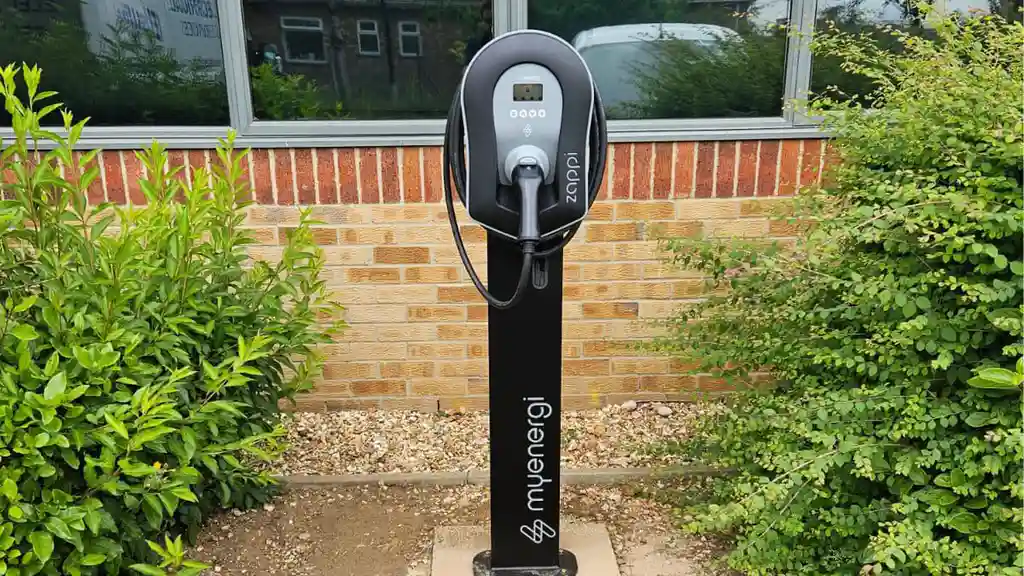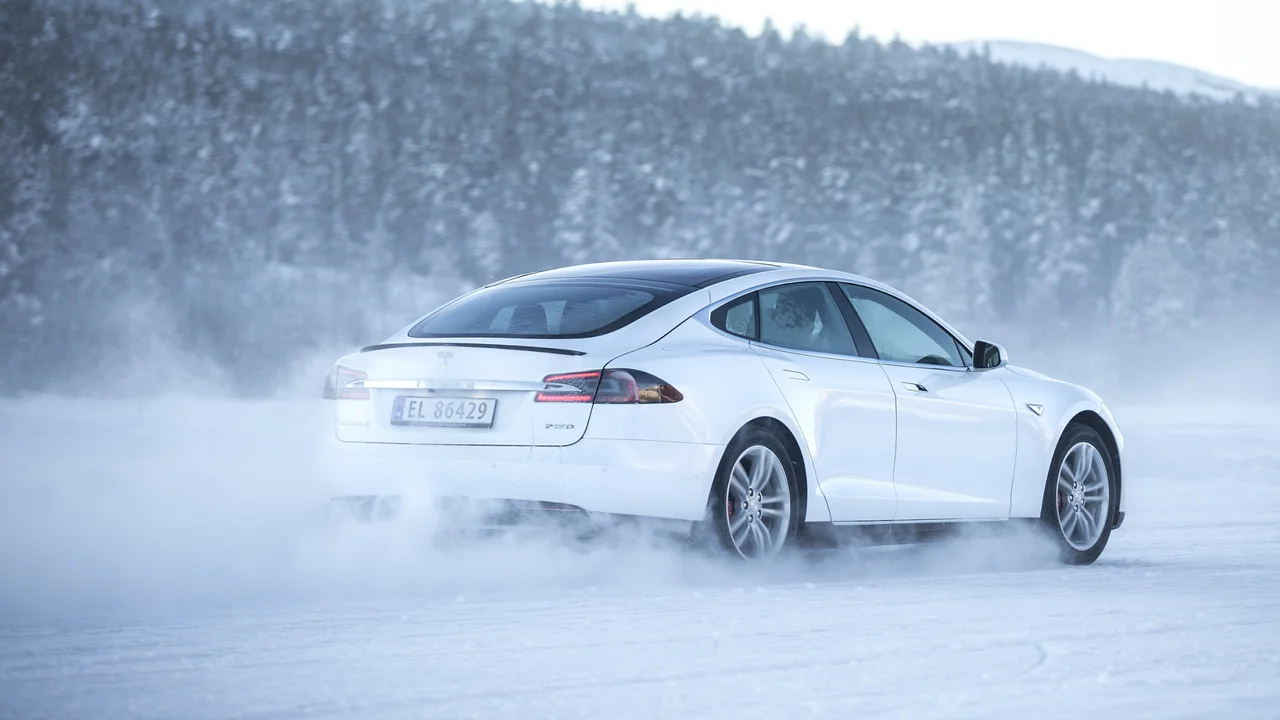EV Charger Installation: A Step-by-Step Guide
EV Charger Installation A Step by Step Guide

Installing an EV charger requires careful planning and execution This step by step guide provides instructions for safe and proper installation Learn about electrical requirements wiring and safety precautions for EV charger installation
Understanding Your EV Charging Needs Before EV Charger Installation
So, you've taken the plunge and joined the electric revolution Awesome! Now, you need a convenient way to juice up your ride at home That's where an EV charger comes in But before you even think about picking up a screwdriver, let's figure out what kind of charger you actually need. This isn't a one-size-fits-all situation, folks.
Level 1 vs Level 2 Charging Speed and Voltage Considerations
First things first, let's talk levels. Level 1 charging is basically plugging your EV into a standard 120V outlet. It's slow – like, *really* slow. We're talking adding maybe 3-5 miles of range per hour. Fine for a tiny top-up, but not ideal for daily driving. Level 2 is where it's at for most homeowners. It uses a 240V outlet, similar to what your dryer or oven uses, and can add 12-35 miles of range per hour. Big difference, right? Think of it this way Level 1 is like sipping from a straw, while Level 2 is like gulping from a water bottle.
Assessing Your Daily Driving Habits and EV Range Requirements
Now, think about your daily driving routine. How many miles do you typically drive each day? And what's the range of your EV? If you only drive a few miles to work and back, and your EV has a decent range, Level 2 might be overkill. But if you're a road warrior or your EV has a smaller battery, Level 2 is almost essential. Also, consider future-proofing. Even if you don't *need* Level 2 right now, you might want it later when you get a new EV with a bigger battery or start driving more.
Considering Future EV Ownership and Potential Upgrades
Speaking of the future, think about your long-term plans. Are you planning on sticking with EVs for the foreseeable future? If so, investing in a Level 2 charger now can save you money and hassle down the road. Plus, some Level 2 chargers come with smart features like Wi-Fi connectivity and energy monitoring, which can be pretty cool. We'll get into those later.
Electrical Requirements for Installing an EV Charger at Home
Okay, so you've decided on Level 2 charging. Great! Now for the not-so-fun part: electrical work. Don't worry, you don't have to become an electrician overnight, but you do need to understand the basics.
Checking Your Home's Electrical Panel Capacity and Amperage
First, you need to check your home's electrical panel. This is usually a gray box located in your garage, basement, or utility room. The key thing to look for is the amperage rating. This tells you how much electricity your panel can handle. A Level 2 charger typically requires a dedicated 40-amp or 50-amp circuit. If your panel is already maxed out, you might need to upgrade it, which can be a significant expense. Call a qualified electrician to assess your panel and determine if it can handle the added load.
Understanding Circuit Breakers and Dedicated Circuits for EV Chargers
You'll also need a dedicated circuit for your EV charger. This means that the charger will have its own circuit breaker in the panel, and nothing else will be connected to that circuit. This is important for safety, as it prevents overloading the circuit and potentially causing a fire. The size of the circuit breaker will depend on the amperage rating of your charger. For example, a 40-amp charger will typically require a 50-amp circuit breaker. Again, consult with an electrician to ensure that you have the correct wiring and circuit breaker for your charger.
The Importance of Grounding and Safety Regulations for Electrical Work
Grounding is another crucial aspect of electrical safety. Make sure that your charger is properly grounded to prevent electrical shocks. Also, be aware of local electrical codes and regulations. These codes are designed to protect you and your property, so it's important to follow them. In most cases, you'll need to obtain a permit from your local building department before installing an EV charger. This will ensure that the installation is done safely and according to code. Seriously, don't skip this step. It could save your life (and your house!).
Choosing the Right EV Charger Model Top Recommendations and Comparisons
Alright, let's get to the fun part: picking out your EV charger! There are tons of options on the market, so it can be overwhelming. But don't worry, I'm here to help you navigate the choices.
Reviewing Popular EV Charger Brands and Features (Wallbox, ChargePoint, Tesla)
Some of the most popular EV charger brands include Wallbox, ChargePoint, and Tesla. Wallbox chargers are known for their sleek design and smart features. The Wallbox Pulsar Plus, for example, is a compact and powerful Level 2 charger that can deliver up to 48 amps. It also comes with Wi-Fi connectivity, energy monitoring, and voice control integration. Prices range from $600-$800.
ChargePoint is another well-respected brand that offers a range of chargers for both home and commercial use. The ChargePoint Home Flex is a versatile Level 2 charger that can be installed with different amperage ratings, depending on your needs. It also comes with Wi-Fi connectivity, energy monitoring, and a mobile app for controlling your charging sessions. Prices range from $700-$900.
And of course, there's Tesla. Their Wall Connector is designed specifically for Tesla vehicles, but it can also be used with other EVs using an adapter. It offers fast charging speeds and a sleek design that complements Tesla's vehicles. Prices range from $400-$500, but keep in mind you might need an adapter if you don't drive a Tesla.
Comparing Charging Speeds Amperage Ratings and Smart Features of Different Models
When choosing a charger, consider the amperage rating. A higher amperage rating means faster charging speeds. Also, look for smart features like Wi-Fi connectivity, energy monitoring, and mobile app control. These features can help you optimize your charging sessions and save money on electricity. For example, you can schedule your charger to only charge during off-peak hours when electricity rates are lower.
Considering Budget Installation Costs and Long Term Energy Savings
Don't forget to factor in installation costs. Some chargers are easier to install than others, which can save you money on labor. Also, consider the long-term energy savings. A smart charger can help you optimize your charging habits and reduce your electricity bill. Remember, the upfront cost of the charger is just one piece of the puzzle. Think about the overall cost of ownership, including installation, energy savings, and maintenance.
Specific Product Recommendations and Usage Scenarios
Let's dive into some specific product recommendations. For the budget-conscious EV owner, the **JuiceBox 40** is a solid choice. It offers 40 amps of charging power and basic smart features at a reasonable price (around $500). It's a great option for those who want a reliable Level 2 charger without breaking the bank. Imagine using this in a small suburban home where you primarily need to charge overnight.
If you're looking for the ultimate in charging speed and convenience, the **Wallbox Pulsar Plus 48** is a top contender. With its 48-amp charging capacity and sleek design, it's a great addition to any modern home (prices around $700). Picture this installed in a modern, minimalist garage – a perfect match for a high-end EV. This is a good choice for multi-EV households or those who need to quickly replenish their battery.
For Tesla owners, the **Tesla Wall Connector** is a no-brainer. It's designed to seamlessly integrate with Tesla vehicles and offers fast charging speeds. Plus, it looks great next to your Tesla. If you've got a Tesla, it's the obvious choice, providing a seamless charging experience. Imagine pulling your Model 3 into the garage and easily connecting to the Wall Connector – a perfect match.
Step by Step Guide to Installing Your EV Charger Safely
Okay, you've got your charger, you've checked your electrical panel, and you've obtained the necessary permits. Now it's time to install your EV charger! But before you start, let me reiterate: if you're not comfortable working with electricity, hire a qualified electrician. Your safety is paramount.
Gathering the Necessary Tools and Safety Equipment for EV Charger Installation
First, gather your tools and safety equipment. You'll need a screwdriver, a wire stripper, a voltage tester, a level, and safety glasses. Also, make sure to turn off the power to the circuit you'll be working on at the electrical panel. Double-check with a voltage tester to ensure that the circuit is de-energized. Safety first, always!
Mounting the EV Charger Unit on the Wall or Stand
Next, mount the EV charger unit on the wall or stand, according to the manufacturer's instructions. Make sure to use the correct mounting hardware and ensure that the charger is securely attached. Use a level to ensure that the charger is mounted straight. A crooked charger is not a good look!
Wiring the EV Charger to the Electrical Panel Connecting Wires and Following Diagrams
Now comes the tricky part: wiring the EV charger to the electrical panel. Carefully follow the wiring diagram provided by the manufacturer. Connect the wires to the correct terminals on the circuit breaker and the charger unit. Make sure to use the correct gauge wire for the amperage rating of your charger. Improper wiring can be dangerous and can damage your charger.
Testing the EV Charger and Ensuring Proper Functionality and Voltage
Once you've wired the charger, turn the power back on at the electrical panel. Use a voltage tester to ensure that the charger is receiving the correct voltage. Then, test the charger with your EV to ensure that it's charging properly. If everything is working correctly, congratulations! You've successfully installed your EV charger.
Safety Precautions and Best Practices for EV Charger Use
Now that your charger is installed, let's talk about safety. EV chargers are generally safe, but it's important to follow some basic precautions to prevent accidents.
Regularly Inspecting the Charger Cable and Connections for Damage
Regularly inspect the charger cable and connections for damage. Look for cracks, frayed wires, or loose connections. If you find any damage, stop using the charger and have it repaired or replaced. A damaged charger can be a fire hazard.
Avoiding Overloading the Circuit and Using Extension Cords Safely
Avoid overloading the circuit. Don't plug other appliances into the same circuit as your EV charger. This can overload the circuit and potentially cause a fire. Also, avoid using extension cords with your EV charger. Extension cords can reduce the charging speed and can be a fire hazard. If you must use an extension cord, make sure it's a heavy-duty cord that's rated for the amperage of your charger.
Protecting the Charger from Weather Conditions and Extreme Temperatures
Protect your charger from weather conditions and extreme temperatures. If your charger is installed outdoors, make sure it's protected from rain, snow, and direct sunlight. Extreme temperatures can damage the charger and reduce its lifespan. Consider installing a weatherproof enclosure to protect your charger from the elements.
Following Manufacturer's Guidelines and Seeking Professional Assistance When Needed
Always follow the manufacturer's guidelines for using your EV charger. These guidelines are designed to ensure your safety and protect your charger from damage. If you have any questions or concerns, don't hesitate to seek professional assistance from a qualified electrician.
Troubleshooting Common EV Charger Issues and Problems
Even with proper installation and usage, you might encounter some issues with your EV charger from time to time. Here are some common problems and how to troubleshoot them.
Identifying Error Codes and Understanding Their Meanings
Many EV chargers have error codes that can help you diagnose problems. Consult your charger's manual to understand the meaning of these codes. For example, an error code might indicate a problem with the wiring, the voltage, or the charging cable.
Addressing Charging Connection Problems and Communication Errors
Sometimes, the problem might be as simple as a loose connection. Make sure that the charging cable is securely plugged into both the charger and your EV. Also, check for any communication errors between the charger and your EV. These errors can sometimes be resolved by restarting the charger or your EV.
Checking Circuit Breakers and Electrical Connections for Overloads
If your charger suddenly stops working, check the circuit breaker in your electrical panel. If the breaker has tripped, reset it. If the breaker trips repeatedly, it could indicate an overload or a problem with the wiring. In this case, you should consult with an electrician.
When to Contact a Qualified Electrician for Professional Repairs
If you've tried troubleshooting the problem yourself and you're still having issues, it's time to contact a qualified electrician. Don't attempt to repair the charger yourself if you're not comfortable working with electricity. A professional electrician can diagnose the problem and make the necessary repairs safely and effectively.
Maximizing Energy Efficiency and Reducing Charging Costs
Finally, let's talk about how to maximize energy efficiency and reduce your charging costs. After all, one of the benefits of owning an EV is saving money on fuel.
Utilizing Off Peak Charging Hours and Time of Use (TOU) Rates
One of the best ways to save money on charging is to utilize off-peak charging hours. Many utility companies offer time-of-use (TOU) rates, which means that electricity is cheaper during certain times of the day, typically overnight. Schedule your charger to only charge during off-peak hours to take advantage of these lower rates. Many smart chargers have this feature built-in.
Monitoring Energy Consumption and Adjusting Charging Habits
Monitor your energy consumption to see how much electricity you're using to charge your EV. Many smart chargers provide energy monitoring data that you can access through a mobile app or web portal. Use this data to adjust your charging habits and optimize your energy usage. For example, you might find that you can save money by charging more slowly or by charging only when your battery is low.
Exploring Solar Panel Integration for Sustainable EV Charging
If you really want to maximize your energy efficiency and reduce your charging costs, consider integrating solar panels with your EV charger. Solar panels can generate clean, renewable energy that you can use to charge your EV. This can significantly reduce your electricity bill and your carbon footprint. Plus, you can often get tax credits and rebates for installing solar panels.
Taking Advantage of Utility Rebates and Incentives for EV Charger Installation
Finally, be sure to take advantage of utility rebates and incentives for EV charger installation. Many utility companies offer rebates to homeowners who install Level 2 chargers. These rebates can help offset the cost of the charger and the installation. Check with your local utility company to see what rebates are available in your area.
:max_bytes(150000):strip_icc()/277019-baked-pork-chops-with-cream-of-mushroom-soup-DDMFS-beauty-4x3-BG-7505-5762b731cf30447d9cbbbbbf387beafa.jpg)






